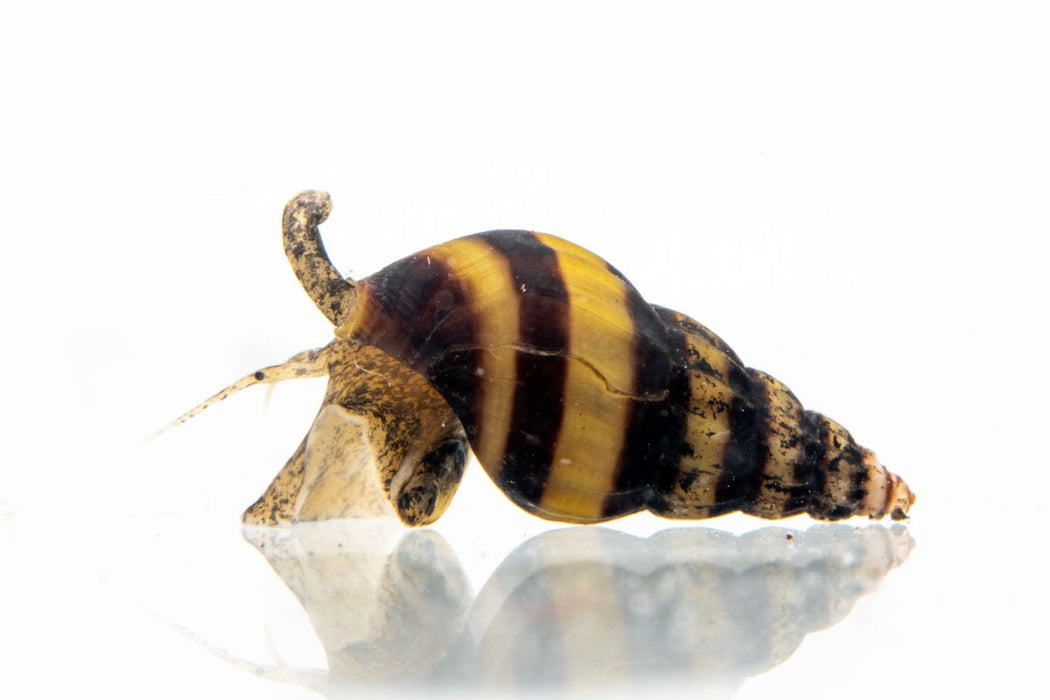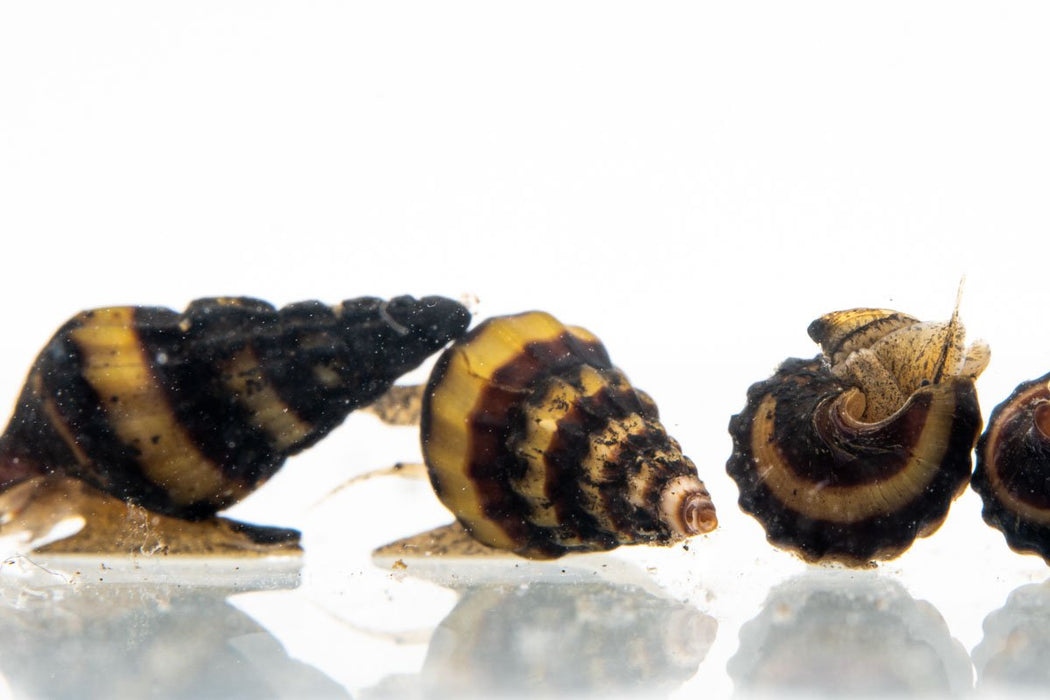
Assassin Snails
Common Name: Assassin Snail
Scientific Name: Clea Helena
Genus: Clea
Wild Origin: Southeast Asia
Adult Size: 3in
**Note: All livestock orders will come carefully packaged with solid wall Styrofoam insulation and shipped via 1-day shipping only. No extra insulation needs to be added to your cart for your livestock.
Assassin Snails are one of the most popular snail species to keep in a planted aquarium. They sport an attractive shell and are known for being predators of unwanted pest snails in the planted tank. We recommend them for any aquarium that has pond snails, malaysian trumpet snails, ramshorn snails and bladder snails.
While they should be safe to keep with other larger snails, it is a possibility that some Assassins may bother or kill them. The same rule of caution goes with shrimplets or dwarf shrimp species. We recommend using sand as a preferred substrate as Assassins will appreciate the opportunity to burrow and dig.
When choosing tank mates for your snails, avoid species that eat them. These include Loaches, Crayfish, Large Cichlids, Goldfish, and other larger species. We prefer keeping our snails in most of our Buce tanks along with Amano Shrimp, Neocardina Shrimp, Caridina Shrimp, Oticinclus, Siamese Algae Eaters, Tetras, Cories, Bettas and other peaceful fish.
Key Features & Important Notes
- Tank-raised specimen.
- To increase survival rates, please allow 2-3 business days after placing an order to properly prepare live animal shipments.
Listed information should be treated as general guidelines only. We encourage you to do thorough research before committing to keeping any livestock.
- Temperature Range: 75-80°F
- pH: 6.5-8.0
- GH: 6-20
- KH: 2-15
30 gallons. We don't recommend smaller tanks as snails produce a large amount of waste that will add to the tank's bio-load.
Diet
Carnivorous feeding habits Worms, other snails (like Nerite Snails and Rabbit Snails), decomposing fish, fish flakes, bloodworms, other protein-rich supplements.
Breeding
Assassin snails exhibit distinct male and female sexes, differing from the hermaphroditic nature of other snail species. Determining the sex of these snails is difficult. If you intend to breed them, it's a good idea have a minimum of six individuals in the aquarium to ensure a suitable mix of both sexes.
During the mating process, they engage in a coupling that lasts approximately 12 hours. Following copulation, the female will lay multiple individual eggs. These eggs are commonly placed on plants or driftwood, although they might also be laid on decorations or even the aquarium glass. The eggs have a roughly square shape, featuring a central brown sac. Typically, the eggs hatch within a few weeks, generally between a range of 3 to 8 weeks.
The incubation period can be influenced by the mineral content in the water. Upon hatching, the juvenile snails will burrow into the substrate, rarely emerging until they reach maturity. This maturation phase usually spans around six months, at which point they begin to surface from the substrate.





